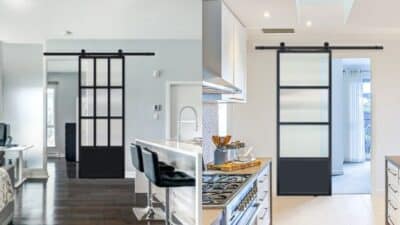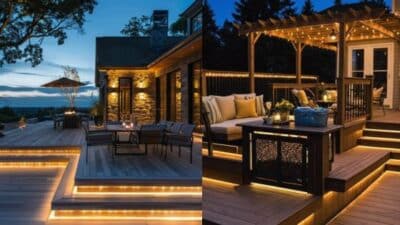A home’s front door does more than just welcome guests—it reflects your style, protects your home, and contributes to energy efficiency. With design trends shifting toward long-term durability and low maintenance, the fiberglass front door has become a top contender for homeowners in 2025.
But not all fiberglass doors are created equal. As manufacturers expand their offerings, it’s important to understand what sets a great door apart. In this blog, we’ll walk you through what to look for when buying a fiberglass front door, including material quality, energy ratings, security features, style choices, and installation considerations.
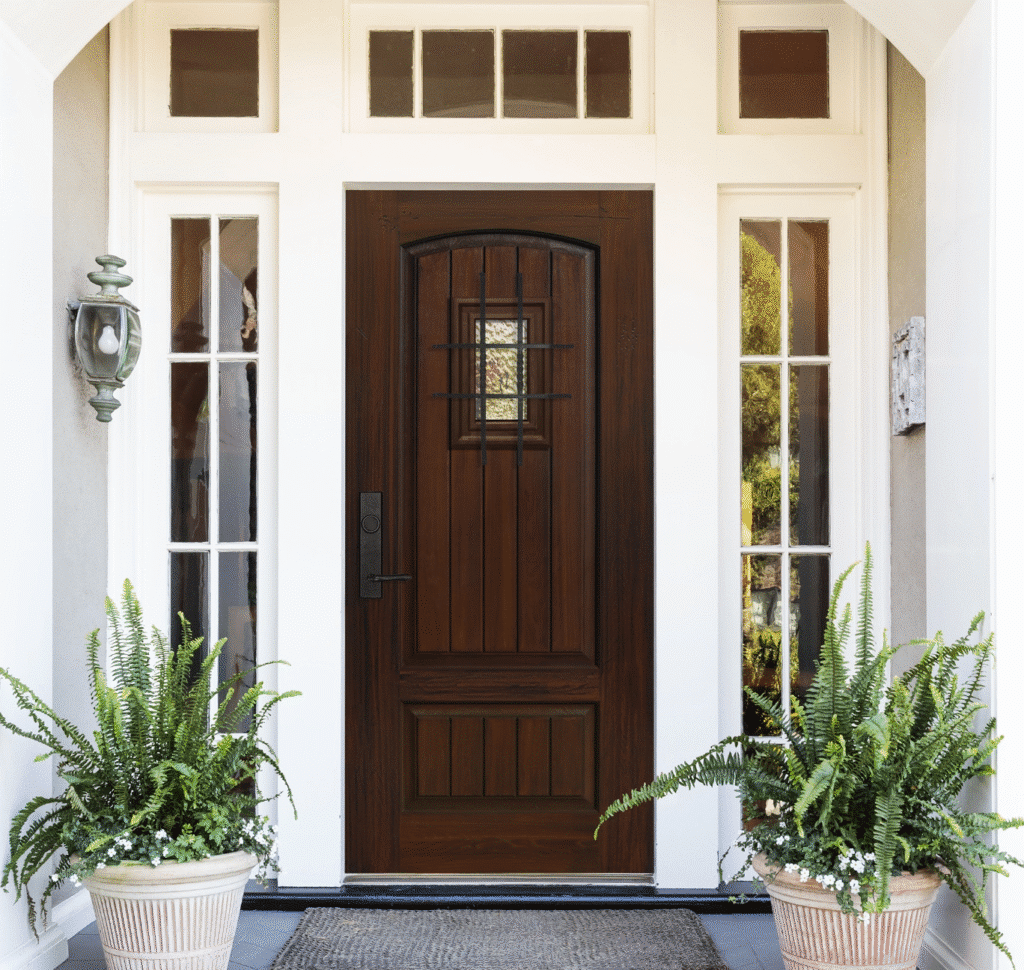
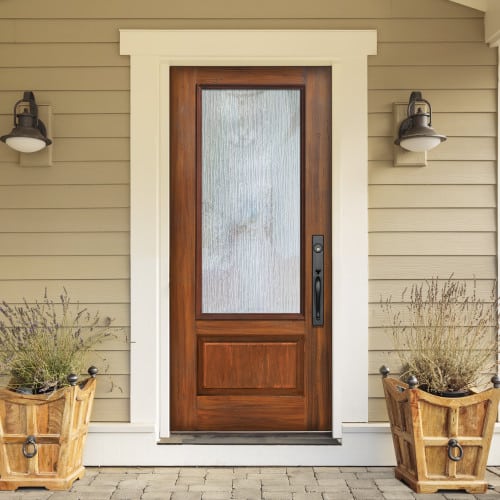
What Is a Fiberglass Front Door?
A fiberglass front door is made using compression-molded fiberglass panels that encase a foam core. This design delivers the strength of wood or steel with superior resistance to weather, warping, and dents. Fiberglass doors can be smooth for a modern look or textured to mimic woodgrain—making them ideal for homeowners who want the beauty of wood without the upkeep.
Key Characteristics:
- Moisture-resistant and won’t rot or rust
- Highly energy-efficient with foam insulation
- Resistant to dents, scratches, and UV fading
- Available in various colors, styles, and textures
- Lower maintenance compared to wood or steel
Why Choose a Fiberglass Front Door in 2025?
In 2025, more homeowners are upgrading to fiberglass front doors thanks to advancements in materials and performance standards. Let’s explore why fiberglass has become the go-to option.
1. Improved Durability
Modern fiberglass doors are engineered to withstand harsh weather, temperature swings, and daily wear. They resist shrinking, swelling, and cracking, unlike wood, and won’t rust like steel.
2. Energy Efficiency
With rising energy costs, insulation matters more than ever. Fiberglass front doors are typically filled with polyurethane foam, which helps reduce energy loss and maintain indoor comfort.
3. Aesthetic Versatility
Available in a wide variety of panel styles, finishes, and decorative glass options, these doors suit homes ranging from craftsman bungalows to ultra-modern builds.
4. Low Maintenance
No need to sand, seal, or repaint every few years. A simple wipe-down keeps fiberglass doors looking fresh. Many models come with factory-applied, fade-resistant finishes.
5. Cost-to-Value Ratio
Though more expensive than basic steel doors, fiberglass options offer better long-term value by reducing maintenance and increasing curb appeal.
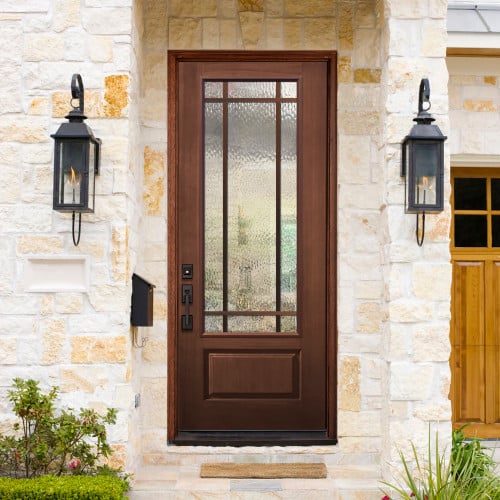
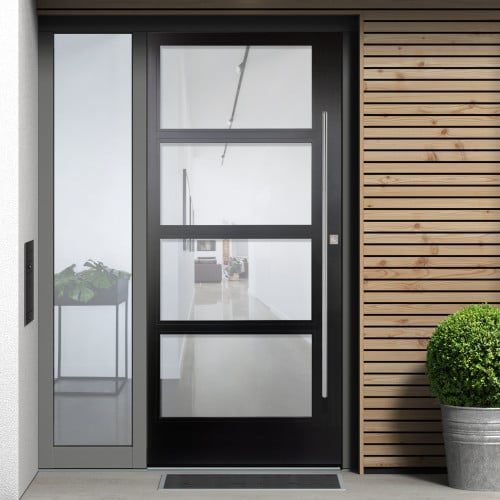
Essential Factors to Consider Before Buying
Choosing the right fiberglass front door involves more than just picking a color. Below are the most important things to evaluate:
1. Construction Quality
The door’s internal structure impacts both its strength and insulation properties.
Key Components to Look For:
- Solid engineered wood stiles and rails for added strength
- Polyurethane foam core for thermal performance
- Composite or LVL frame to prevent warping or rot
Avoid hollow-core doors or those with low-density foam, as they compromise energy efficiency and structural integrity.
2. Energy Star Rating
An Energy Star-rated fiberglass front door helps you save on utility bills and reduces your home’s environmental footprint.
What to Check:
- U-Factor: Measures heat transfer; look for values under 0.30
- Solar Heat Gain Coefficient (SHGC): Ideal range is 0.20–0.30 for most climates
- Low-E Glass: Reduces heat gain and UV damage in models with decorative glass inserts
In 2025, stricter federal guidelines make Energy Star certification even more important, especially in areas with extreme climates.
3. Security and Lock Compatibility
Security is non-negotiable when it comes to your front door. Fiberglass doors are tough, but the right hardware enhances protection.
Must-Haves:
- Reinforced lock blocks or strike plates
- Compatibility with smart locks and deadbolts
- Multi-point locking systems (available in premium models)
- Impact-resistant glass (for models with windows)
Some doors even come with integrated smart security, including fingerprint access or app-controlled locks—an upgrade gaining traction in modern homes.
4. Style and Finish Options
Fiberglass front doors can match virtually any architectural style. In 2025, textured finishes, bold colors, and natural wood tones are trending.
Popular Styles:
- Modern Minimalist: Clean lines, smooth finish, no panels
- Craftsman: Simple grid windows, woodgrain texture
- Traditional: Classic 6-panel design with decorative glass
- Rustic/Transitional: Stained finishes, arched tops, wrought iron inserts
Most doors can be painted or stained, or ordered in pre-finished colors like black, walnut, or slate grey.
5. Glass Panel Options
Incorporating glass into your fiberglass front door adds elegance and natural light. But it’s important to choose the right type.
| Glass Type | Features and Use Case |
| Clear Glass | Maximum light, minimal privacy |
| Frosted/Obscure | Softens light and increases privacy |
| Low-E Glass | Reduces UV and heat gain |
| Decorative Glass | Adds personality with patterns or caming |
| Impact-Resistant | Ideal for storm-prone or high-security areas |
Some doors offer built-in blinds between glass layers—great for privacy and ease of maintenance.
6. Prehung vs. Slab Doors
When shopping, you’ll find prehung and slab fiberglass front doors:
- Prehung: Includes door, frame, hinges, weatherstripping, and often threshold. Ideal for new construction or full replacements.
- Slab: Door only—used when replacing an existing door but keeping the frame.
For most homeowners, prehung doors are the better choice, ensuring airtight seals and easier installation.
7. Size and Customization
Standard fiberglass doors typically come in sizes like 36″ x 80″, but in 2025, demand for oversized entry doors is rising.
Customization Options Include:
- Widths up to 42″
- Double-door setups
- Sidelites or transoms
- Custom stain or paint colors
- Personalized glass designs or address etching
If you have a non-standard entryway, choosing a brand that offers customization is essential.
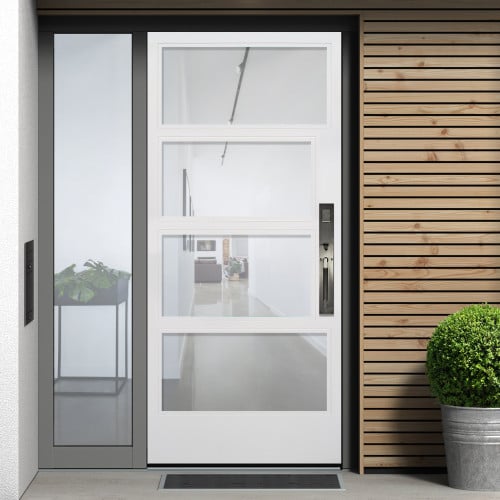
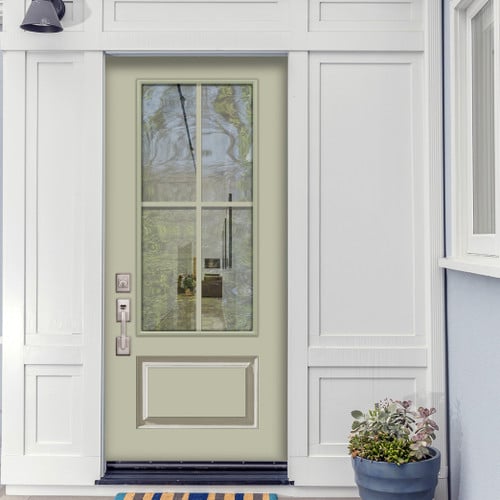
Common Mistakes to Avoid When Buying
Even quality-conscious buyers can make mistakes. Here are a few to steer clear of:
- Ignoring the frame material: Always choose rot-resistant frames like composite or PVC.
- Skipping weatherstripping: Poor seals defeat the purpose of an energy-efficient door.
- Choosing aesthetics over insulation: A beautiful door that lacks insulation will cost you long-term.
- DIY installation without expertise: Fiberglass doors require level mounting and precise alignment—always hire a pro if unsure.
Installation Considerations
Proper installation ensures your fiberglass front door performs as expected. Here’s what it should include:
- Leveling and squaring of the frame
- Anchoring into studs for security
- Weatherstripping alignment
- Door swing direction and clearance
- Caulking and sealing for moisture protection
In 2025, smart installers are also integrating door sensors and video doorbells during installation—especially in new smart homes.
How Much Does a Fiberglass Front Door Cost in 2025?
Fiberglass front doors offer a mid-to-premium price point. Here’s a general pricing overview:
| Feature | Price Range (USD) |
| Basic Slab Door | $300 – $600 |
| Prehung with Decorative Glass | $700 – $1,200 |
| Premium or Oversized Design | $1,500 – $3,000+ |
| Installation (Labor Only) | $250 – $500 |
| Smart Lock Integration (Optional) | $150 – $400 |
While they may cost more upfront than steel doors, fiberglass doors often outperform in lifespan, energy savings, and aesthetics—making them a smart investment.
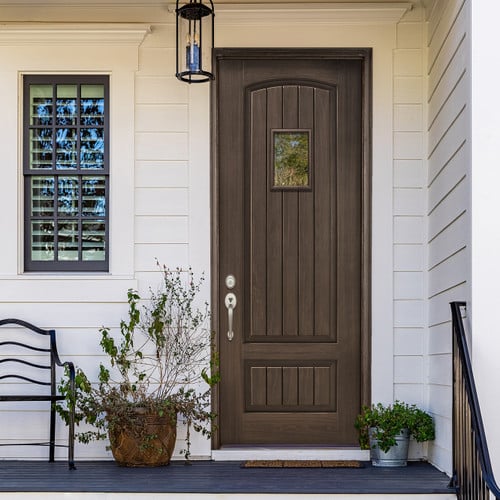
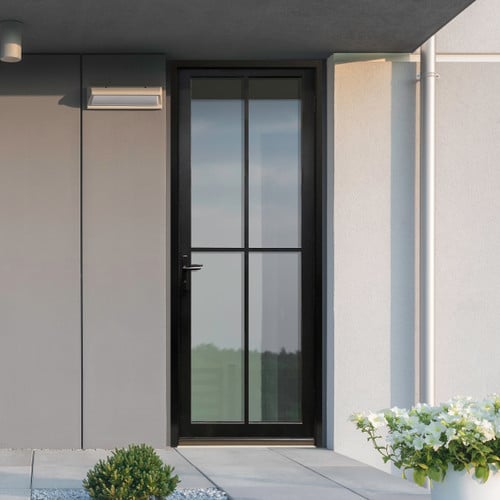
Final Thoughts: Is a Fiberglass Front Door Right for You?
If you’re looking for a front door that balances durability, design, and energy efficiency, fiberglass is hard to beat in 2025. With modern textures, bold colors, smart tech compatibility, and weather resistance, these doors are ideal for homeowners who want both function and curb appeal.
Whether you live in a cold, wet climate or just want to upgrade your home’s entrance without constant upkeep, a fiberglass front door checks all the right boxes.
For those ready to explore top-quality options, Knockety offers a premium line of fiberglass front doors crafted with beauty, performance, and longevity in mind. With customizable styles, durable materials, and expert support, Knockety helps you find the perfect door to welcome you home.
FAQs
1. How long do fiberglass front doors last?
Fiberglass front doors can last 20–30 years or more with proper maintenance, making them one of the longest-lasting entry door options.
2. Can I paint or stain a fiberglass front door?
Yes. Many fiberglass doors come pre-primed or stained but can also be custom painted or re-stained with the right products.
3. Are fiberglass doors more secure than wood?
Yes. They’re more impact-resistant, don’t splinter, and can be paired with multi-point locks or smart systems for extra security.
4. Do fiberglass doors warp or crack?
No. One of the key benefits of fiberglass is its resistance to warping, cracking, or expanding—especially in humid or fluctuating climates.5. Is a fiberglass front door worth the cost?
Absolutely. Although more expensive than basic steel or wood, fiberglass offers better insulation, less maintenance, and longer life—adding long-term value.
- 0shares
- Facebook0
- Pinterest0
- Twitter0
